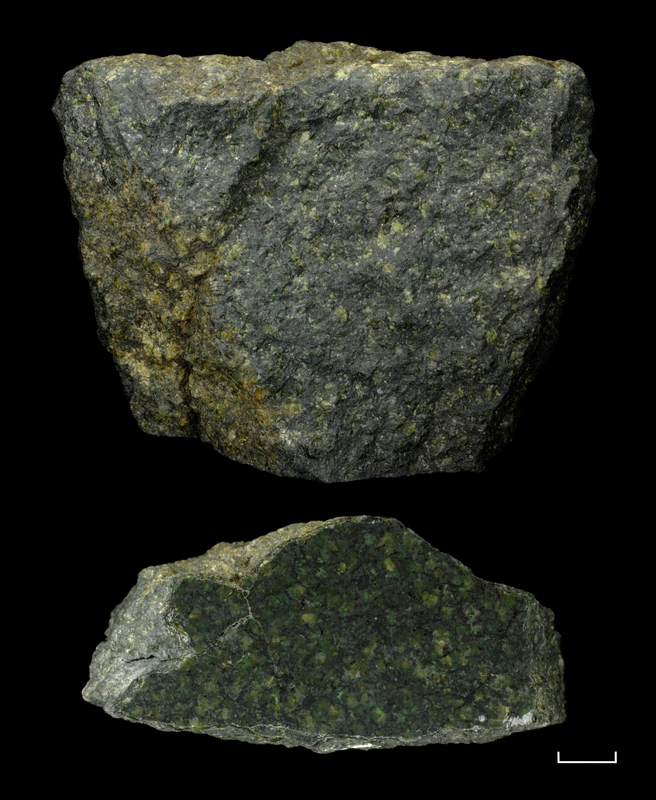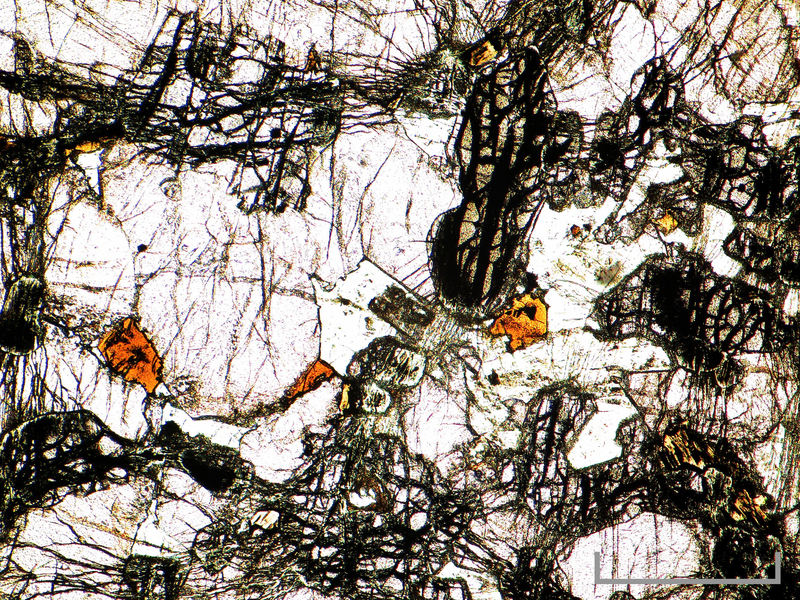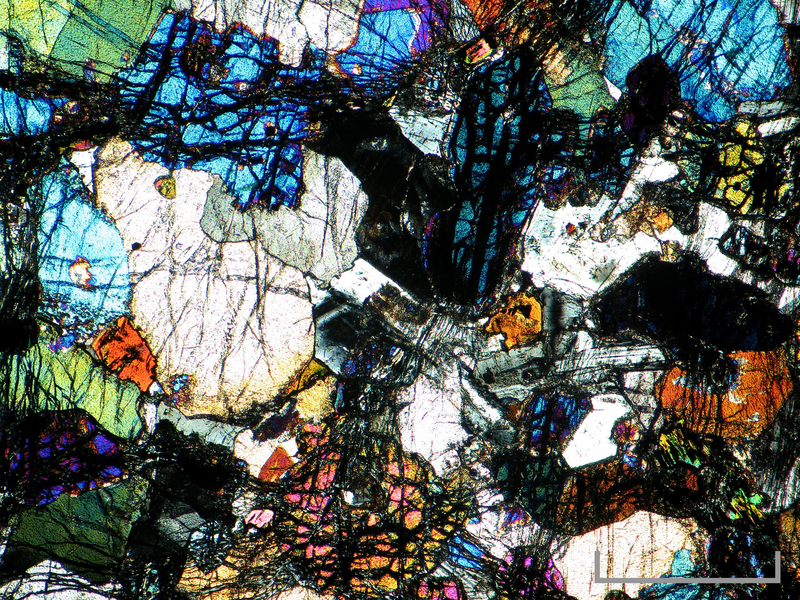- Home
- Rocks
- Type fossils
- Fossil Specimens
- Minerals
- Glossary
- Stratigraphic Chart
- Michel-Levy Chart
- Classification of igneous rocks
- University of Cambridge
- Department of Earth Sciences
- ESC Library
- Moodle
- Sedgwick Museum
- DoITPoMS
- Mindat.org
- Microfossils
- Bryozoans
- Webmineral
- Tree of Life
- CrystalMaker
- Virtual Microscope
L172 Ultramafic cumulate
Title
L172
Ultramafic cumulate
Subject
Age
Precambrian
Location
Lewisian Complex, Dyke
Assynt, Sutherland
Assynt, Sutherland
Description
Hand Specimen
Greenish black, coarse-grained rock, comprising olivine, clinopyroxene and plagioclase.
Grains typically 1-2 mm across.
Grains typically 1-2 mm across.
Thin-section
Olivine
- Subhedral to euhedral grains making up ~45% of the rock. Alteration to magnetite and serpentine, particularly along the curving cracks. Cracks across the thin-section, could be due to expansion of the rock as the olivine was altered.
Clinopyroxene
- Interstitial phase making up ~35% of the rock. Moderate relief, inclined extinction and first order pink to second order orange interference colours.
Plagioclase feldspar
- Interstitial phase making up ~20% of the rock. Low first order interference colours and lamellar twinning.
Accessory minerals - Biotite, small, interstitial grains, altered.
This is a cumulate rock. It has undergone late-stage shear banding.
Rock History
Olivine phenocrysts crystallised first.
Clinopyroxene grew around the olivine phenocrysts.
Interstitial feldspar filled in the remaining gaps.
Shearing of the rock produced bands of deformation.
Hydrothermal alteration.
Rock Name
ultramafic cumulate
Citation
“L172
Ultramafic cumulate,” 1A Collections, accessed April 9, 2024, https://wserv3.esc.cam.ac.uk/p1acollections/items/show/14.
Ultramafic cumulate,” 1A Collections, accessed April 9, 2024, https://wserv3.esc.cam.ac.uk/p1acollections/items/show/14.



